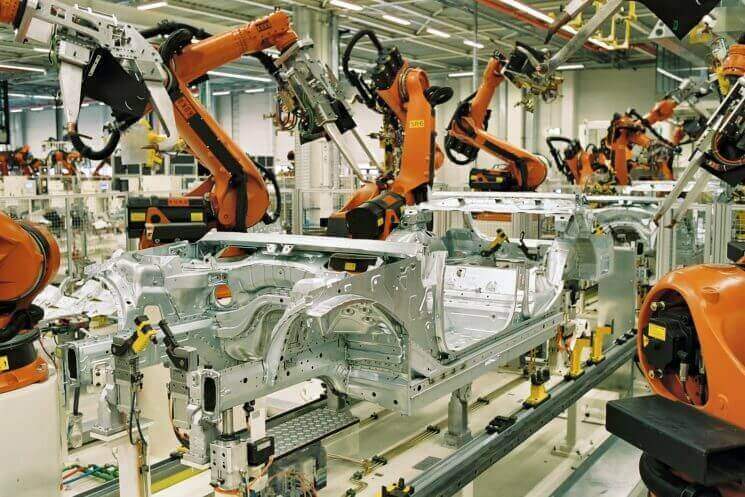In today's industrial world, the question is no longer just how to produce more, but rather how to produce better. How can we ensure that every resource, every material, every minute spent on the production line counts? The answer to these questions is the optimization of production, in particular by improving certain key indicators such as trs, THE trg or even the taakt time to name just a few. However, one of the most effective ways to achieve this is to reduce the scrap rate.
Understanding the scrap rate in the industrial context
THE reject rate is an essential indicator that makes it possible to evaluate the efficiency of a production process. It represents the percentage of products which are manufactured but do not conform to the required quality standards and are therefore rejected. Reducing the scrap rate is not only beneficial to the company in terms of reducing production costs, but it also helps in improving overall quality some products.
Industries are constantly seeking to minimize the scrap rate in order to improve their profitability. This is where initiatives like lean manufacturing come in, which focuses on eliminating waste and improving operational efficiency.
How to calculate the scrap rate?
To calculate the scrap rate, you need to divide the total number of defective products by the total number of products produced, then multiply by 100 to get a percentage. Here is the formula:
Scrap rate (%) = (Number of defective products / Total number of products manufactured) * 100
Suppose a factory produces 10,000 pieces of a certain product in a day. At the end of the day, it is found that 500 of these parts are defective and cannot be sold.
To calculate the scrap rate, we use the formula mentioned above, this gives:
Scrap rate (%) = (500 / 10,000) * 100 = 5%
It means that 5% of total production is defective and cannot be sold. This is valuable information for the company because it indicates possible inefficiency in the production process that could be improved to reduce the scrap rate and therefore increase profitability.
Identifying the major causes of a high scrap rate
Several factors can contribute to a high scrap rate in a factory. These causes can generally be grouped into three main categories: material quality issues, faulty or inadequate equipment, and unoptimized manufacturing process.
Material quality issues
One of the main causes of a high scrap rate is bad quality materials used in production. If the materials used do not meet the necessary quality standards, they may lead to defaults of product which render the finished product unusable.
For example, if you use poor quality metal in the machining of a car part, you could end up with defective parts that require rejection and replacement. These scraps translate into additional costs for the company in terms of wasted materials and lost production time.
Faulty or inadequate equipment
Equipment plays a vital role in any production process. Faulty or inadequate equipment can lead to inefficient production, shaping defects, and ultimately, a high scrap rate. For example, a poorly functioning machine may produce defective parts that must be disposed of, thereby increasing the scrap rate.
Unoptimized manufacturing process
An unoptimized manufacturing process is another major cause of a high scrap rate. This can include problems such as production inefficiency, material waste, and poor quality management. Therefore, process optimization construction is a key strategy to reduce the scrap rate.
What are the strategies to reduce the scrap rate?
Now that we've identified the major causes of a high scrap rate, let's move on to strategies you can implement to reduce this rate in your factory.
Improved material quality
One of the first steps to reducing the scrap rate is to improve the quality of materials used in the design of parts. This can be achieved by working closely with suppliers to ensure the quality of raw materials. Rigorous quality controls must be put in place to verify the conformity of materials before their use.
Equipment Upgrades and Maintenance
To minimize the scrap rate, it is essential to invest in quality equipment and maintain it in good condition. This may involve regular inspections, preventive maintenance, timely repairs, and even upgrades or replacements when necessary. Well-maintained equipment will operate more efficiently and produce less scrap.
Manufacturing optimization
Another essential aspect is manufacturing optimization. This involves carefully analyzing production stages, identifying bottlenecks, common errors and risk areas. By making targeted improvements, such as simplifying workflows, automating repetitive tasks and using advanced quality control techniques, it is possible to significantly reduce errors and defects.
Implementation of a continuous improvement strategy
Reducing the scrap rate is not limited to one-off actions, but requires a global approach to continuous improvement. Here are two important aspects to consider:
Monitoring and analysis of the scrap rate
It is essential to put in place monitoring systems to regularly monitor the scrap rate. This can be achieved using specific key performance indicators (KPIs), such as the percentage of non-conforming products or costs associated with scrap. By analyzing this data, it is possible to identify trends, recurring issues and opportunities for improvement.
Feedback and adjustment of strategies
Once the data is analyzed, it is important to provide regular feedback to the teams involved and adjust strategies accordingly. Transparent communication, cross-functional collaboration and employee engagement are essential to ensure the success of continuous improvement. By considering feedback and lessons learned, factories can make appropriate adjustments to further reduce their scrap rate.



